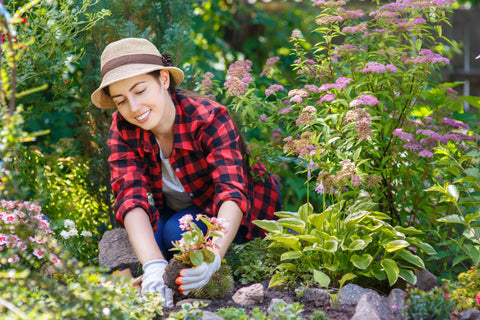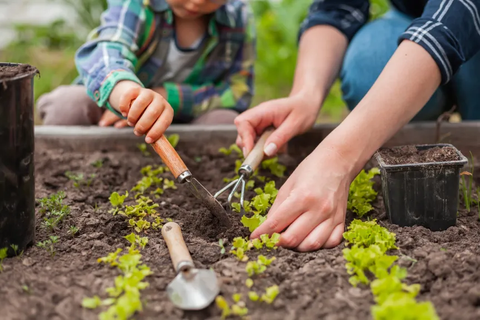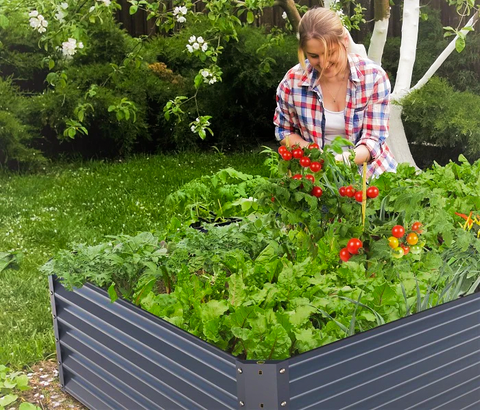As the sun starts to wane and the leaves begin to turn, it's time to embrace the beauty of autumn and prepare your garden for the fall season. While gardening can be a rewarding and therapeutic hobby, it sometimes comes with expenses that can add up. However, updating your garden for fall doesn't have to break the bank. In this comprehensive guide, we'll explore budget-friendly ways to refresh and enhance your garden for the fall, allowing you to enjoy a vibrant and inviting outdoor space without overspending.

The Charm of Fall Gardening
Fall gardening holds a unique appeal that captures the hearts of both seasoned gardeners and newcomers to the world of horticulture. Here are a few reasons why fall gardening is so delightful:
1. Gorgeous Foliage
The autumn season is known for its stunning foliage as trees and shrubs transform into a vibrant palette of red, orange, and gold. Incorporating these colors into your garden can create a captivating display.
2. Cooler Temperatures
Fall offers a reprieve from the scorching summer heat. Gardening in cooler temperatures is more comfortable and enjoyable, allowing you to spend quality time in your garden.
3. Extended Growing Season
Many vegetables and flowers thrive in the fall, providing an extended growing season. You can harvest fresh produce and enjoy late-blooming flowers well into autumn.
4. Preparation for Spring
Fall is an ideal time to prepare your garden for the coming spring. Planting bulbs and performing maintenance tasks in the fall sets the stage for a vibrant garden when winter gives way to spring.

Budget-Friendly Fall Gardening Tips
Now, let's delve into practical and affordable ways to update your garden for the fall season:
1. Start with a Plan
Before you dive into fall gardening, create a plan. Determine what you want to achieve in your garden, whether it's planting fall-blooming flowers, growing vegetables, or enhancing the landscape. Planning helps you stay focused and avoid impulse purchases.
2. Shop End-of-Season Sales
Many garden centers and nurseries offer end-of-season sales in late summer and early fall. Take advantage of these discounts to purchase plants, bulbs, and gardening supplies at a lower cost. Look for clearance sections and deals on perennials, shrubs, and fall-blooming plants.
3. Save and Reuse
Fall is an excellent time to assess your garden tools and equipment. Make any necessary repairs and clean your tools to ensure they're in good working order for the season. Avoid buying new tools if your existing ones can be salvaged.
4. Collect and Save Seeds
If you have flowering plants in your garden, collect and save their seeds. Dry them thoroughly and store them in labeled envelopes or containers. These seeds can be planted next spring, reducing the need to purchase new plants.
5. Mulch and Compost
Mulch is a valuable resource in the garden. Save leaves, grass clippings, and other organic materials to create your mulch. Similarly, start a compost pile or bin to turn kitchen scraps and garden waste into nutrient-rich compost that can enrich your soil.

6. Divide and Share Plants
If you have perennials that have become overcrowded, consider dividing them. This not only helps the plants thrive but also allows you to share them with friends and neighbors, fostering a sense of community and reducing your gardening expenses.
7. Choose Low-Cost Plant Varieties
Select plant varieties that are known for their affordability and hardiness. For example, marigolds, zinnias, and sunflowers are budget-friendly annuals that provide vibrant colors in the fall garden. When choosing perennials, opt for those that are easy to propagate and divide, such as hostas and daylilies.
8. Plant Bulbs for Spring Color
Investing in fall-planted bulbs like tulips, daffodils, and crocuses can provide stunning spring blooms without a significant upfront cost. Look for bulk packages or discounts to get the most value for your money.
9. DIY Garden Decor
Embrace your creative side by crafting your own garden decor. Create homemade garden markers, decorative containers, or garden art using affordable materials like recycled wood, clay pots, or repurposed items.
10. Utilize Natural Pest Control
Instead of spending on chemical pesticides, consider natural pest control methods. Companion planting, beneficial insects like ladybugs, and homemade insecticidal soaps can help protect your plants without harming your budget or the environment.
11. Fall Plant Swaps
Consider organizing a plant swap with fellow gardeners in your community. This allows you to exchange excess plants, seeds, or gardening supplies at no cost while expanding the variety in your garden.

12. Embrace Native Plants
Native plants are well-suited to your region's climate and require less water and maintenance. They also attract local wildlife like butterflies and pollinators. Incorporating native plants into your fall garden can save you money and support local ecosystems.
13. DIY Garden Structures
If you're considering adding structures like trellises, raised beds, or garden borders, consider building them yourself. There are plenty of online tutorials and resources for crafting these structures with affordable materials.
14. Repurpose and Upcycle
Get creative with repurposing and upcycling. Old furniture, containers, or wooden pallets can be transformed into unique garden elements like seating, planters, and garden art.
15. Practice Water Efficiency
Install a rain barrel to collect rainwater for your garden. This sustainable practice not only reduces your water bill but also conserves a precious resource.
Embrace Fall Gardening on a Budget
Gardening in the fall can be a fulfilling and budget-friendly endeavor with a little planning and creativity. As the season changes, your garden can transform into a haven of autumnal beauty and tranquility. So, roll up your sleeves, gather your gardening tools, and embrace fall gardening on a budget. Your garden will thank you with a colorful and vibrant display that you, your family, and your neighbors can enjoy throughout the season. Happy fall gardening!









